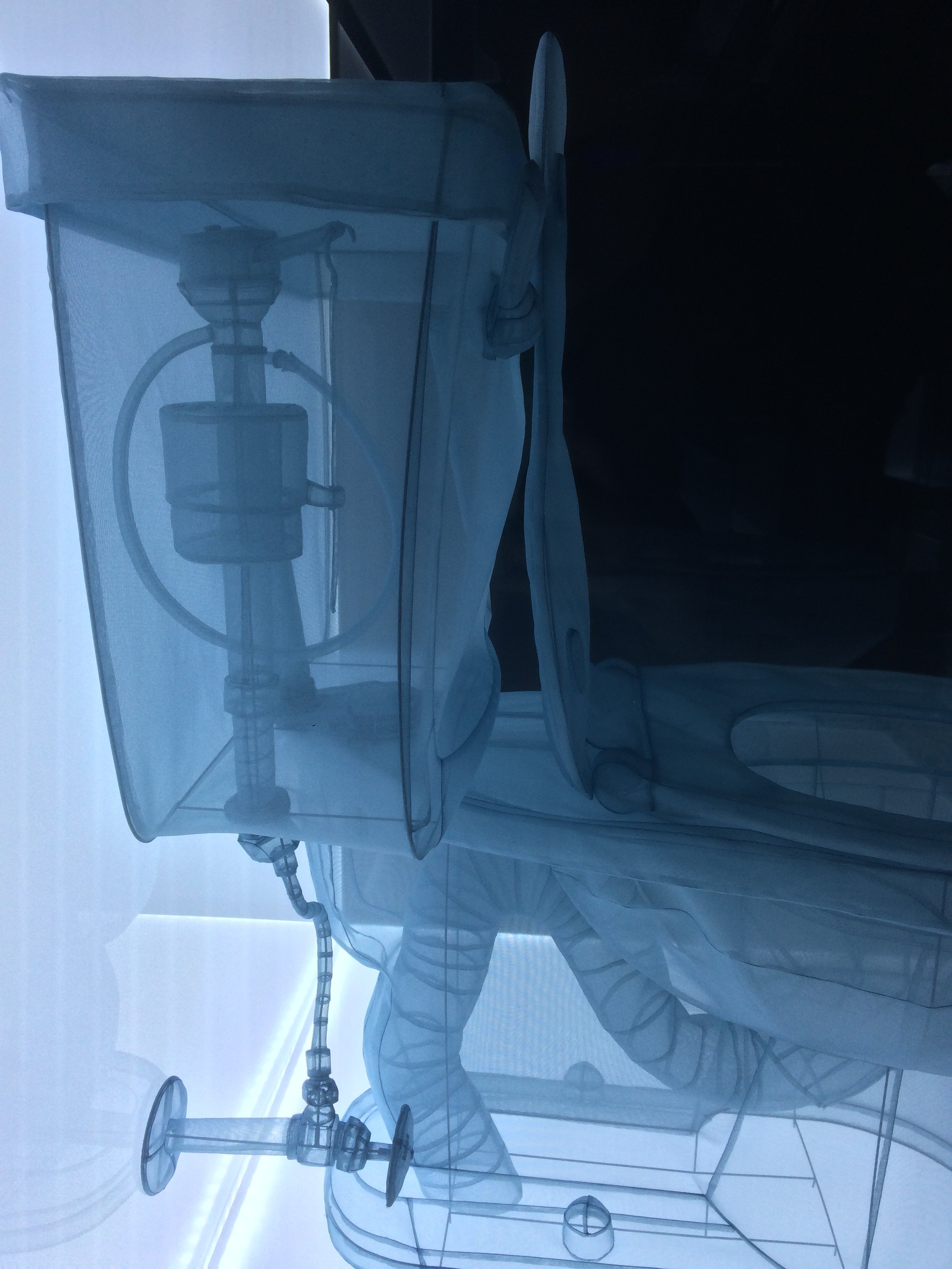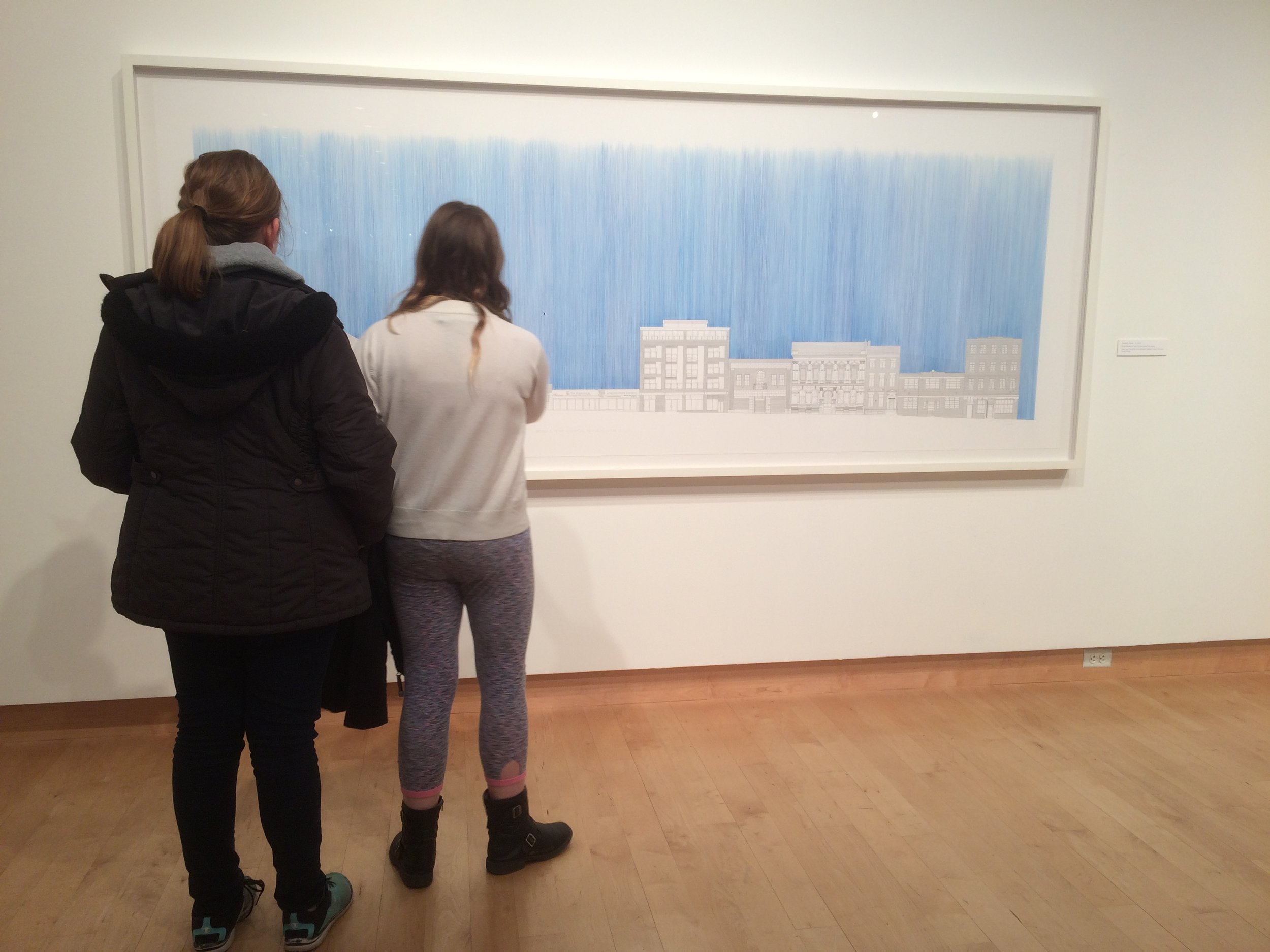Art Show Review: Do Ho Suh at MMOCA
I moved a lot when I was a kid. Every year from preschool through 3rd grade, I lived in a different city and attended a different school, starting in the Midwest and ending on the East Coast. In 10th grade, my family moved back to the Midwest, and during college, we relocated yet again.
Like many people with similar stories, my thoughts and feelings about "home" are, well, a bit complex. When people ask me where my hometown is, I don't have a straightforward answer. Memories of my old houses are deeply imprinted in my mind, but with a sense of scale and emotional weight drawn from my experiences as a child. These memories, therefore, can feel simultaneously rich and hazy, concrete and amorphous.
Detail of "Blueprint, 2014, by Do Ho Suh. Thread embedded in cotton paper.
And so I was excited to experience Do Ho Suh's work for the first time at the Madison Museum of Contemporary Art--work that explores some of these themes of home, migration, and belonging.
Of course, Suh's life experience is very different from mine. He didn't just move around--he lived in the vastly different cultures of Seoul, South Korea, where he was born, and the United States, where he attended art school. According to MMoCA's website:
Do Ho Suh (b. 1962, Seoul, South Korea) is internationally acclaimed for meticulous, mesmerizing sculptures and installations that relate to his personal experiences living in both Eastern and Western cultures. Suh's move from South Korea to the United States in 1991 to attend the Rhode Island School of Design inspired his focus on the house as a primary subject. Reimagining and reconstructing his various homes, the artist creates works of art that highlight the porous boundary between public and private space, and explore notions of global identity, space, nomadism, memory, and displacement.
The main exhibit, Suh's meticulously recreated apartment ("Apartment A, Unit 2, Corridor and Staircase, 348 West 22nd Street, New York, NY 10011, USA" ), was indeed fascinating. You walk through rooms of gauzy fabric, where every wall, doorknob, and faucet is recreated in exacting detail, yet completely see-through. Things that should be solid are amorphous, ethereal. It is a little bit like having X-ray vision--you can see through the fridge door to the shelves within--but even more so like you are walking through someone's memory, detailed yet hazy.
View through the walls of "Apartment A, Unit 2..." by Do Ho Suh. Polyester fabric and stainless steel tubes.
The apartment is created in different colors--half is in blue fabric, and the other half is in yellow. The color envelops you and, as you walk from the blue room to the yellow room, your sense of the space change. Cool, contemplative space becomes vibrant and active.
External walls of "Apartment A, Unit 2..." in blue and yellow fabric.
Part of the appeal is just looking at every little detail and marveling at how he made it. I was so entranced by the intricate breaker box, the electrical outlets, the toilet's plumbing.
Detail from "Specimen Series."
Detail from "Specimen Series."
I also loved seeing the blueprints that the artist used to create the patterns for the house. Just the thought of someone covering every single surface of his home with paper and creating massive rubbings was utterly fascinating to me.
"Rubbing/Loving Project," 2014.
The exhibit also had a range of thread drawings that the artist had done relating to themes of home, immigration, movement, and identity. These were really beautiful and interesting.
"My Homes," 2010. Thread embedded in cotton paper.
"Myselves," 2013. Thread embedded in cotton paper.
I took my twelve-year-old stepdaughter and one of her friends along to the museum, and they loved every minute of it. They walked through the rooms, exclaiming at every turn, "Look at the bathtub!" "Wow, check out the stove!" When we looked at the thread drawings, they had opinions about the meaning of every piece. "I think this one symbolizes how hard it was for him to leave his home." "I feel like this represents how you can look one way on the outside and be different on the inside." I loved listening to their thoughts and their enthusiasm about the work.
My stepdaughter and her friend investigating one of Do Ho Suh's drawings.
Have you visited the show or seen Suh's work elsewhere? What did you think of it?








